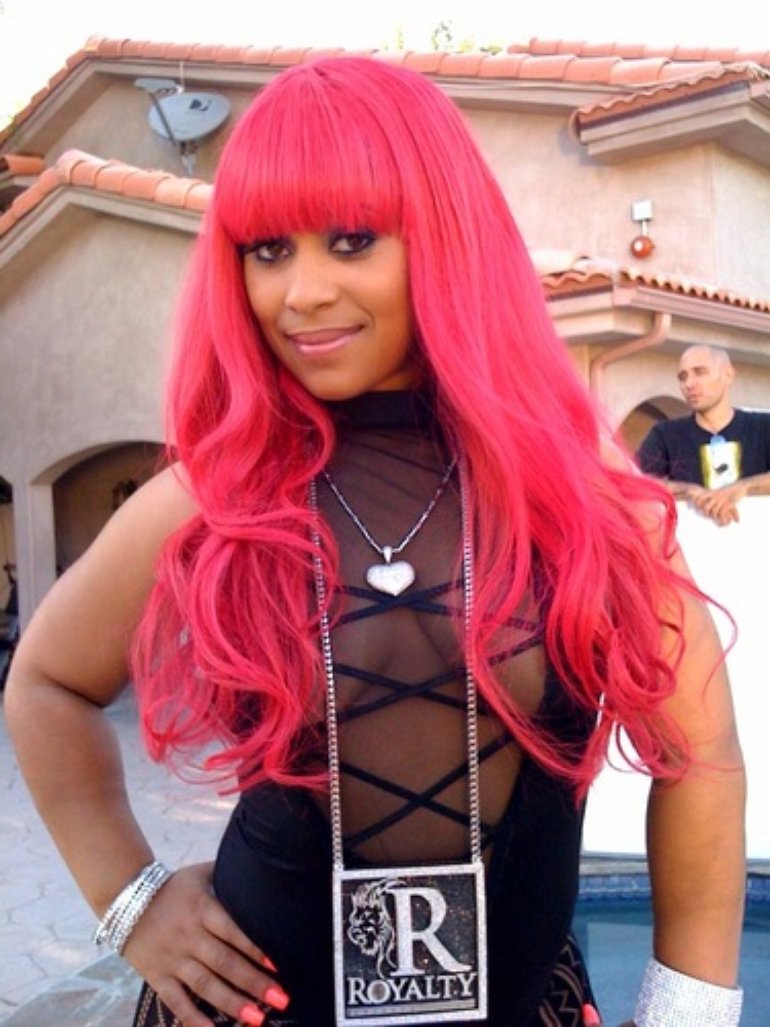Beyond The Search: What 'Pinky Pinky Porn' Really Points To
Have you ever typed something into a search bar, maybe a phrase you heard or a title that sounded intriguing, only to wonder what you might find? It's almost like a little adventure, isn't it? Well, if you've stumbled upon the phrase "pinky pinky porn," you're probably in for a bit of a surprise, perhaps even a chuckle. What many people might assume this term refers to is actually a world away from its true origin. It's a classic Hollywood film, believe it or not, and a rather important one at that.
So, you might be thinking, what on earth does a film have to do with such a search term? It's a common mix-up, you know, one of those linguistic quirks that happens when words get twisted or misunderstood over time. The film we're talking about, simply titled "Pinky," is a powerful drama from 1949, and it certainly has nothing to do with explicit content. Instead, it delves deep into some really significant social issues that were, and in some ways still are, very much a part of our world.
This movie generated considerable discussion back in its day, and that's because it tackled a very sensitive subject: race relations in the American South. It featured a compelling story about identity and belonging, with performances that truly resonated with audiences. So, if you're curious about "pinky pinky porn," get ready to discover a piece of cinematic history that's far more thought-provoking and historically rich than you might have initially imagined.
Table of Contents
- The Film "Pinky": A Glimpse into 1949
- The Story of Pinky: A Woman Between Worlds
- Exploring the Film's Powerful Themes
- The People Behind "Pinky"
- Why the Misleading Search: "Pinky Pinky Porn"?
- "Pinky" Today: A Lasting Impact
- Frequently Asked Questions About "Pinky"
- Final Thoughts on "Pinky"
The Film "Pinky": A Glimpse into 1949
Released in 1949, the film "Pinky" arrived during a very specific time in American history. It was a period when the country was still grappling with deeply entrenched racial segregation, especially in the southern states. This movie, directed by Elia Kazan, was quite bold for its era because it dared to put these difficult conversations right on the big screen. It really pushed the boundaries of what Hollywood was willing to show and discuss publicly, which, you know, was a pretty big deal back then.
The very idea of a film openly addressing racial prejudice and identity was, in a way, revolutionary. It wasn't just entertainment; it was a mirror held up to society, prompting viewers to consider some uncomfortable truths. The movie's subject matter, which centered on race relations and the casting choices made, generated considerable controversy. This controversy, honestly, helped to put the film on the map and spark important discussions, even if those discussions were often heated.
This film is a prime example of how cinema can serve as more than just a pastime. It can actually be a vehicle for social commentary and change, offering a window into the challenges and attitudes of a bygone era. It's a fascinating look back, really, at how far we've come and, in some respects, how much more there is to do.
The Story of Pinky: A Woman Between Worlds
The heart of "Pinky" lies in its compelling narrative about a young woman facing an incredibly difficult choice. Pinky, played by Jeanne Crain, is a light-skinned Black woman who, after graduating from a nursing school in the North, has been passing for white. She's even fallen in love with a young white doctor, William Lundigan's character, who has no idea about her true heritage. This situation, you can imagine, is a rather delicate one, filled with potential heartache.
The story truly begins when Pinky returns to her grandmother's house in the Deep South. This return is a turning point for her. It forces her to confront her identity, her family, and the societal expectations that weigh heavily on her. She finds herself caught between two worlds: the life she built in Boston, where she could "pass," and the reality of her roots and community in the South.
Her grandmother, played by Ethel Waters, is a pivotal figure in her journey, urging her to embrace who she truly is. The film then explores the emotional and social challenges Pinky faces as she navigates these complex personal and racial boundaries. It's a story, you know, that really makes you think about what it means to belong and what it costs to hide who you are.
Exploring the Film's Powerful Themes
"Pinky" is much more than just a simple story; it's a rich exploration of several deep and very human themes. At its core, it focuses on racial prejudice, particularly as it was experienced in the Deep South during that time. The film doesn't shy away from showing the harsh realities of segregation and the discrimination faced by Black communities, which was, quite frankly, rather brave for a mainstream Hollywood production then.
Another major theme is identity, and the intricate ways it's shaped by race and societal expectations. Pinky's struggle to reconcile her light skin with her Black heritage, and her ability to "pass" for white, brings up so many questions about what defines a person. Is it appearance? Family history? Personal choice? The film, in a way, puts these questions right in front of the audience, making them consider their own views.
The movie also touches on themes of love, sacrifice, and duty. Pinky's relationship with her white fiancé, and the difficult decision she faces about revealing her background, adds a layer of personal drama to the broader social commentary. There's also the element of economic struggle and the fight for dignity, as Pinky's grandmother, Ethel Barrymore's character, tries to leave her property to Pinky, sparking further legal and racial battles. It's a rather layered story, really, with a lot to unpack.
The People Behind "Pinky"
The success and impact of "Pinky" owe a lot to the talented individuals who brought it to life. Directed by Elia Kazan, a visionary filmmaker known for his powerful dramas, the movie benefits from his keen eye for human emotion and social realism. His direction helped to make the sensitive subject matter feel authentic and compelling, which, you know, is no small feat.
The cast was also quite remarkable. Jeanne Crain took on the challenging role of Pinky, portraying her internal conflict with a subtle strength that really drew audiences in. Her performance was a key reason the film resonated so deeply with many viewers. Then there were the incredible supporting actors, like Ethel Barrymore and Ethel Waters, who delivered unforgettable performances.
Ethel Barrymore played Miss Em, a wealthy white woman who befriends Pinky's grandmother, and her portrayal earned her an Academy Award nomination. Ethel Waters, as Pinky's grandmother, brought a deep sense of dignity and wisdom to her character, grounding the film in a powerful emotional reality. William Lundigan, as Pinky's fiancé, added another dimension to the story, representing the world Pinky was trying to fit into. The combined efforts of this cast and crew truly made "Pinky" a memorable and significant film of its time.
Why the Misleading Search: "Pinky Pinky Porn"?
It's genuinely fascinating how a search term like "pinky pinky porn" can become associated with a serious 1949 drama. The internet, you know, is a funny place, and sometimes terms get twisted or misinterpreted for a whole host of reasons. One possibility is simply a phonetic misunderstanding or a common misspelling. Someone might hear "Pinky" and, without knowing the context, add a descriptive term that seems to fit a general search pattern they're used to seeing.
Another reason could be the way search algorithms sometimes suggest related terms, even if those relations are tenuous. Or, perhaps, there's a different, unrelated piece of content out there with a similar-sounding name that *does* have explicit material, causing confusion. It's not uncommon for unique or older film titles to get mixed up with more modern, often sensational, search queries.
Basically, this particular search phrase is a classic example of how a lack of specific knowledge about a topic can lead to a completely incorrect assumption. It highlights the importance of getting accurate information, rather than just relying on a quick guess. The film "Pinky" is, in fact, quite the opposite of anything explicit; it's a poignant and important piece of cinematic history that deserves to be understood in its proper context. It's a bit like looking for apples and accidentally finding oranges, you know, just very different.
"Pinky" Today: A Lasting Impact
Even though "Pinky" was released way back in 1949, its themes and questions remain surprisingly relevant today. The conversations it sparked about race, identity, and societal expectations are still very much a part of our ongoing discussions. It's a film that, you know, continues to offer insights into the historical struggles of race relations in America, providing a valuable context for understanding contemporary issues.
The movie is often studied in film courses and history classes because of its groundbreaking nature and its willingness to tackle difficult subjects head-on. It's a powerful reminder of how far society has come in some areas, but also how much work still needs to be done. It's a testament to the film's enduring power that it can still provoke thought and discussion decades after its initial release.
If you're interested in learning more about classic American cinema and its role in social commentary, "Pinky" is definitely a film worth exploring. It's a piece of history that continues to resonate, showing us that some stories, and the questions they raise, are truly timeless. You can often find it available on streaming platforms that specialize in classic movies, or even through your local library. It's a pretty significant watch, actually, for anyone curious about our past.
Frequently Asked Questions About "Pinky"
Is "Pinky" (1949) based on a true story?
While the character of Pinky and her specific journey are fictional, the film very accurately reflects the real-life experiences of many light-skinned Black individuals who "passed" for white during that era. The social and racial prejudices depicted were, unfortunately, a very real part of life in the American South at the time. So, it's not a true story in the biographical sense, but it captures a very real historical reality.
What was the controversy surrounding the film "Pinky"?
The controversy around "Pinky" stemmed primarily from its bold subject matter of race relations and, quite significantly, the casting of Jeanne Crain, a white actress, to play a light-skinned Black woman. This casting choice sparked considerable debate, even though it was common practice in Hollywood at the time. The film also faced censorship challenges in some Southern states due to its themes.
Where can I watch the film "Pinky" today?
The film "Pinky" is often available through various classic movie streaming services or digital rental platforms. You might also find it on DVD or Blu-ray, or even through your local public library's collection. It's a bit of a historical gem, so it's usually accessible to those who are interested in finding it. You can learn more about important films from the past on our site.
Final Thoughts on "Pinky"
So, the next time you hear or see the phrase "pinky pinky porn," you'll know the real story behind it. It's not about anything explicit, but rather about a significant and thought-provoking film from 1949 that bravely tackled the complexities of race and identity. It's a powerful reminder that sometimes, the most unexpected search terms can lead us to truly valuable discoveries. It's a film that, you know, really makes you think about how far we've come and the stories that shaped us.

Pinky-Pinky :: Behance

Pinky Pinky - movie: where to watch streaming online

Pinky Photos (1 of 5) | Last.fm